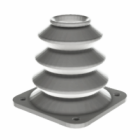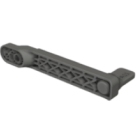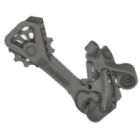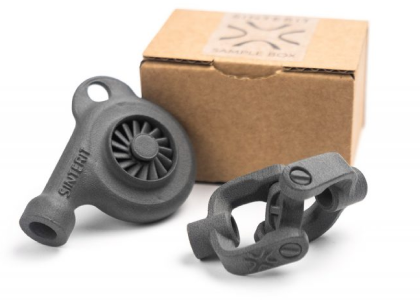Biocompatible materials for 3D printing
Biocompatible 3D printing is at the forefront of personalized medicine, dental applications, and biomedical engineering. These are materials that can safely interact with the human body — whether externally (like dental guides), internally (like implants), or temporarily (like surgical tools or anatomical models). The key to their effectiveness lies in their chemistry, surface finish, and the precision of the 3D printing process itself.
Not every material labeled as “safe” is truly biocompatible; it must meet rigorous standards such as ISO 10993 or USP Class VI. This section breaks down what qualifies a material as biocompatible and how it’s used in practice.
What makes a material biocompatible?
A biocompatible material is one that does not cause toxic, allergic, or inflammatory responses when it comes into contact with living tissue. Depending on the application, materials can be certified for skin contact, mucosal contact, or implantation — either for short-term or long-term use.
In 3D printing, the biocompatibility of a material is influenced by:
- its base chemical formulation (e.g., resin, thermoplastic, metal),
- the printing process and curing conditions,
- post-processing steps (e.g., washing, UV curing, sterilization),
- surface properties such as roughness or porosity.
Only a combination of approved material + validated process = a part that can be called biocompatible.
Common biocompatible materials used in 3D printing
Different 3D printing technologies support different types of biocompatible materials. What are the most commonly used?
SLA/DLP resins
- Used for dental models, surgical guides, splints, and hearing aids.
- Offer fine resolution and surface quality.
- Require careful post-curing and validation for medical use.
FDM thermoplastics
- PEEK and ULTEM (PEI) are high-performance, biocompatible thermoplastics.
- Suitable for long-term implants or surgical instruments.
- Require industrial FDM printers with high-temperature capability.
SLS powders
- Nylon-based materials like PA11 Medical Grade are used for orthopedic supports and prosthetics.
- Offer high strength and lightweight performance.
- Ideal for custom-fit parts in high-wear environments.
Metal alloys
- Titanium and cobalt-chrome are standard for permanent implants (e.g., dental, orthopedic).
- Produced using metal 3D printing methods like LPBF.
- Biocompatibility depends on both material and surface preparation.
Can you 3D print organic material?
In a limited sense, yes — particularly in the field of bioprinting, where living cells or bioinks are used to create tissue-like structures. However, this is a separate domain from conventional polymer or metal-based printing.
In the context of medical-grade printing, “organic” usually refers to biologically compatible rather than truly biological. For now, printing living tissue is experimental, but printing scaffolds, surgical models, and biocompatible parts is very much a reality — and growing fast.
Applications of biocompatible 3D printing
Biocompatible materials are used across a wide range of clinical and research scenarios, including:
- surgical planning models – patient-specific anatomy printed from medical scans,
- custom dental devices – aligners, crowns, surgical guides,
- hearing aids and wearables – comfortable, skin-safe shells,
- orthopedic implants and prosthetics – lightweight, strong, and anatomically precise,
- disposable surgical tools – safe for brief mucosal or dermal contact.
In all these cases, the value lies in customization, traceability, and fast turnaround, which traditional manufacturing can’t match.
Final thoughts
Biocompatible materials for 3D printing are a cornerstone of modern healthcare innovation. They bridge the gap between engineering precision and biological safety — enabling patient-specific solutions that are fast, efficient, and reliable. While not every printer or material is suitable for medical use, when the right tools are in place, additive manufacturing becomes a powerful ally in the clinic, the lab, and the operating room.
Explore also
- Polymers in 3D printing
- 3D printing of metals
- Raw materials for 3D printing
- Composites 3D printing
- Recycled 3D printing filament
- 3D printing flexible
- Filament types for 3D printing
Related categories













